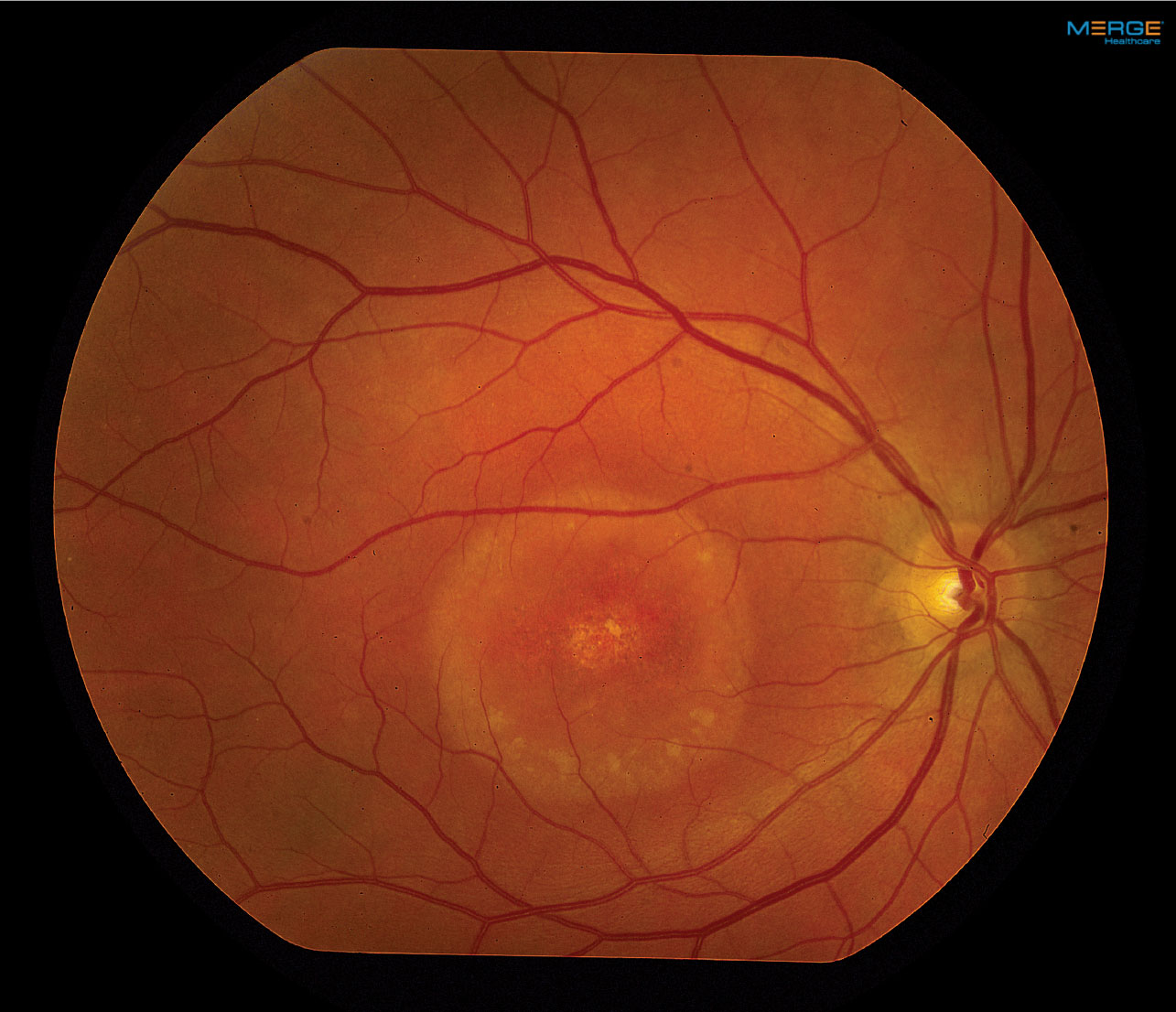 |
Close monitoring is crucial for patients with PPS, as the disease shares similarities with similar but distinct conditions. Photo: Mark T. Dunbar, OD. Click image to enlarge. |
Researchers recently identified a novel finding, acquired vitelliform lesions (AVLs), in some patients with peripapillary pachychoroid syndrome (PPS), a distinct variant of the pachychoroid disease spectrum that results in a significantly thicker nasal macular choroid than the temporal macular choroid. They described seven cases in their study and reported good visual prognosis.
The retrospective, multicenter, observational case series included seven patients (six male, mean age 72.6) with PPS and AVLs. The researchers reviewed their medical records and multimodal imaging findings. They reported a mean baseline BCVA of 0.11 (Snellen equivalent 20/25), and all patients achieved at least 20/30 or better. Mean follow-up time was 24.4 months (range one to 54 months). At the final follow-up visit, 13 of 14 eyes had stable BCVA. One eye’s BCVA deteriorated due to subfoveal atrophy.
The researchers found peripapillary RPE alteration and pigment migration in all eyes on fundus exam. On fundus autofluorescence, there were mottled hyper- and hypo-autofluorescence in the peripapillary region and hypo-autofluorescent lesions that corresponded to pigmentary changes. OCT showed nasal choroidal thickening and pachy vessels with overlying RPE irregularity. The researchers reported that all eyes presented with peripapillary intraretinal fluid, five eyes of three patients had subretinal fluid and 11 eyes had AVLs.
“This new association of AVL and PPS makes it mandatory to distinguish these lesions from macular neovascularization (MNV),” they noted. “As PPS can present intraretinal and/or subretinal fluid, this differentiation is even more important. In our study, eyes with AVL didn’t present MNV. Multimodal imaging is an excellent tool to rule out MNV. Accurate diagnosis is needed and can avoid unnecessary interventions, such as intraocular treatments.” The researchers say that AVLs in adults may occur in many different entities that share common features, regardless of the underlying clinical diagnosis.
Importantly, they noted foveal atrophy is a major cause of vision loss in the presence of AVLs—as in Best disease, adult vitelliform macular dystrophy and AMD. While they didn’t observe atrophy in the areas of the lesions, they believe that patients should be closely followed for potential atrophy development.
“Different conditions associated with AVLs present with variable choroidal thickness, and so far, the choroid has not been in the spotlight in the pathology of this disease,” they wrote. “The novel association of PPS and AVL might shed light on the production of this subretinal material. Sub- and intraretinal fluid in PPS are believed to originate from the congested choroid through regions of peripapillary atrophy and associated atrophy of the RPE and ELM that normally serve as barriers for fluid to enter the retina.
“We hypothesize that the congested choroidal vessels lead to choriocapillaris compression and hereby cause RPE dysfunction, ultimately explaining the presence of peripapillary fluid accumulation in the sub- or intraretinal space, as well as the occurrence of vitelliform material. Over time, a subretinal hyperreflective vitelliform lesion developed bilaterally in an area overlying pachy vessels with choriocapillaris compression. These findings strengthen the hypothesis that the underlying choroidal pathology plays a role in the formation of the AVL.”
They concluded that the “novel association [between PPS and AVL] might help to diagnose this condition more accurately and distinguish it from similar disorders.”
Barequet D, Iglicki M, Meshi A, et al. Acquired vitelliform lesions: a novel finding in eyes with peripapillary pachychoroid syndrome. Retina. January 10, 2022. [Epub ahead of print]. |

